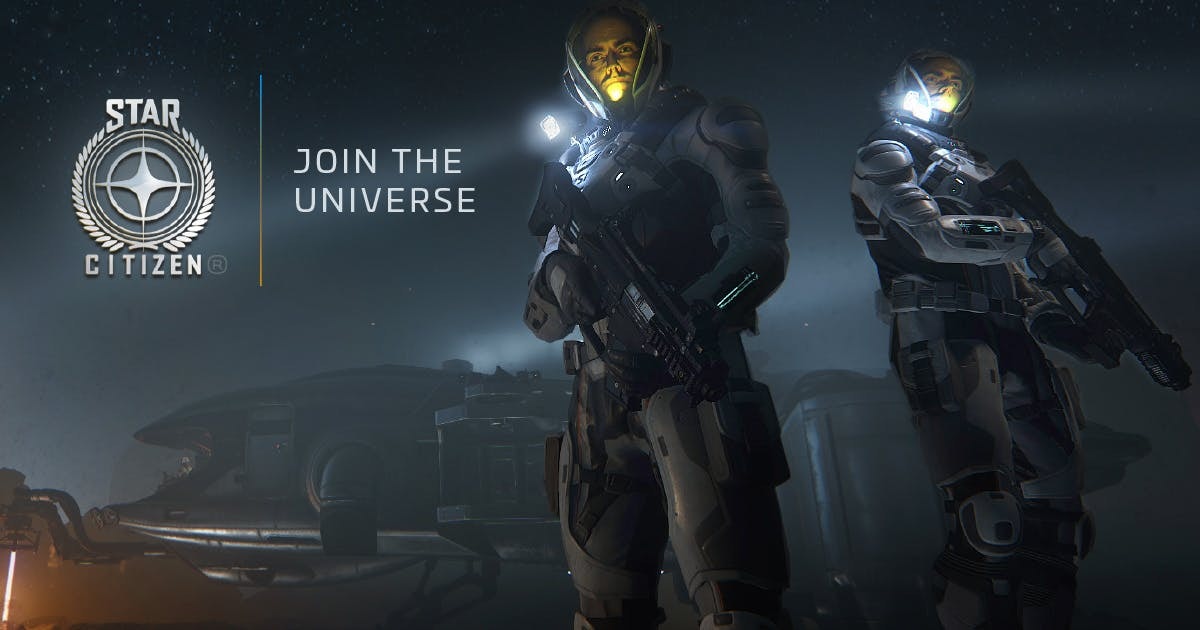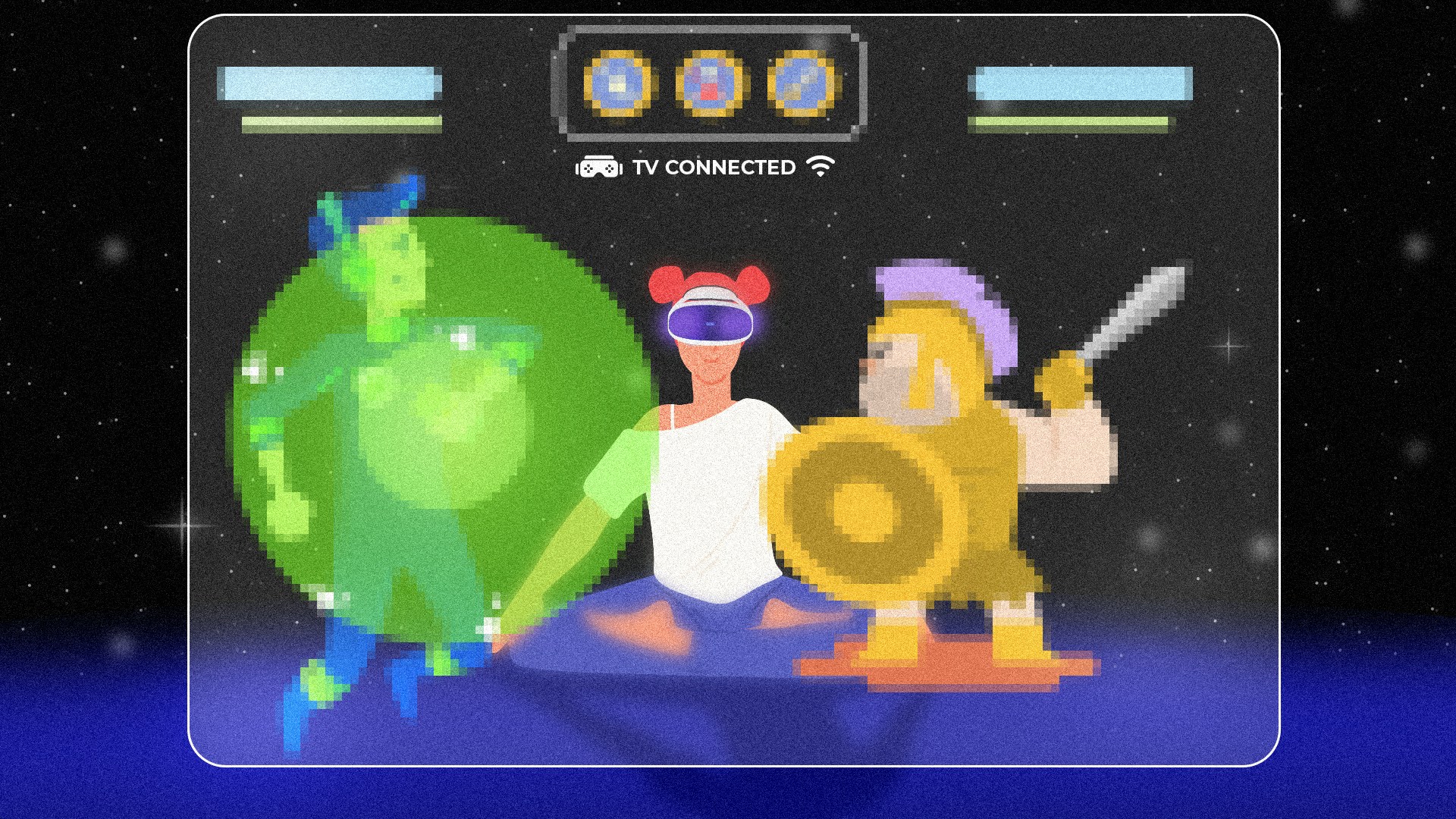Star Citizen: A Crowdfunded Universe Fuelled by Promises

After around a decade in development, and raising more than $314 million from 2,8 million backers, the video game Star Citizen is still nowhere near finished. Yet supporters continue to pour money into the venture: in May 2020 alone, developer Cloud Imperium Games (CIG) raised over $15 million in crowdfunding. Meanwhile, CIG continually announces new features, using annual CitizenCon live shows to whip spectators up with promises of the joys to come.
It’s the virtual economy at an extreme, an enormous speculative bubble inflated by hope and hype. But how did we get here, and what is powering this seemingly endless funnel of goodwill?
The story began in 2012 with the launch of Star Citizen’s Kickstarter campaign, at which point the game had been in production for around a year. Developers flocked to Kickstarter in a bid to secure funding for games considered commercially risky by publishers. LucasArts veteran Tim Schafer raised a then record-breaking $3.3 million in March 2012 for the point-and-click adventure game Double Fine Adventure (later renamed Broken Age), proving that crowdfunding was a viable way to revive “dead” gaming genres by directly targeting their most devoted fans.
So the stage was set for CIG head Chris Roberts to launch Star Citizen’s Kickstarter campaign in October 2012, with a combative pitch: “The traditional publishers don't believe in PC or Space Sims. Venture capitalists only want to back mobile or social gaming startups. We say they're wrong. We say that there is a large audience of PC gamers that want sophisticated games built for their platform. And inside this audience, a significant group of people that have always loved space games, and if given a quality one again will be happy to play it.”
Roberts had considerable goodwill within the PC community. He was behind the hugely successful Wing Commander games of the 1990s—lavish space-combat epics that featured performances from actors like Mark Hamill and Malcom McDowell—and later developed the well received space-combat titles Starlancer and Freelancer. So PC players flocked to back Roberts’ promise of a “massive persistent universe” featuring 100 star systems that could be explored alongside friends, combined with a cinematic Wing Commander-style single-player campaign. The Kickstarter project raised $2.1 million, smashing its $500,000 goal, and backers pledged an additional $4.1 million through CIG’s own website.
It seemed that CIG had more than enough funds to finish Star Citizen in time for its estimated release date of November 2014... a date that seems hopelessly optimistic in hindsight.

A child simulates spaceflight against a sky with two heavenly bodies.
PERPETUAL ALPHA
One feature of the Star Citizen campaign was its promise of access to superior spaceships with higher pledges. For example, backers could add $225 to their pledges for a luxurious RSI Constellation ship. But the ships existed only as elaborate pieces of artwork until the launch of the Hangar Module in August 2013, which allowed backers to view the ships they’d bought in the game, even if they couldn’t fly them. For that, they’d have to wait until June 2014 for the launch of Arena Commander, a standalone module that allowed dog fighting and racing against other players or computer opponents, but little else.
The promised persistent universe wouldn’t emerge until December 2015, with the ‘Alpha 2.0’ update. However, this was still a stripped-down version of the initial pitch, featuring just a handful of moons, planets and space stations to explore.
The definitions of “alpha” and “beta” in game development are very loose, but generally alpha denotes the build of a game in a fairly rudimentary state, with many features yet to be added or completed. Beta denotes a game that is almost finished, with a few bugs to iron out. As of October 2020, the current version of Star Citizen is the just-launched Alpha 3.11, with Alpha 3.12 set to follow later in the year. There is no projected release date for the finished version, or indeed for a beta release.
Meanwhile, Star Citizen’s single-player campaign, Squadron 42, was spun off in 2016 as a separate, full-priced game that has been continually delayed and is not currently playable by the public. In August 2019, CIG announced a beta version would launch in Q3 2020. In March 2020, the company said the public development roadmap for Squadron 42 would no longer be updated, although “progress on Squadron 42 is happening and we’re broadly happy with that progress.”
GOING GREY: VESSELS IN THE SKY
CIG continues to raise funds for the development of Star Citizen through the sale of elaborate spaceships, many of which are only available to buy for limited periods or in limited numbers, like the $1,650 Drake Kraken. In some cases, buyers simply purchase the idea of a ship as part of a "concept sale," reminiscent of how Holland's Tulipomania craze became less about tulips exchanging hands than documented promises of tulips (shortly before the bubble popped, bringing the economy down with it).
The $350 Anvil Carrack, for instance, was first sold as a concept in 2014, but wasn’t made available in-game until late 2019. In total, around 130 spaceships and ground vehicles have been introduced so far, although only around 87 can actually be used in the current build. A bundle called The Legatus Pack, featuring every ship announced at the time, along with a number of extra items, went on sale in 2018 for an astonishing $27,000.
In 2014, Eurogamer investigated a burgeoning grey market that sprung up for trading Star Citizen goods, where limited-edition ships changed hands for hundreds or even thousands of dollars. Players can’t directly sell spaceships to other people within the game, but they can “gift” them, and there is nothing to stop them from setting up private PayPal transactions to sell rare ships.
Marketplaces quickly emerged on sites like Reddit, with middlemen buying rare ships and selling them on for a profit. Scams emerged, too, with buyers arranging purchases, only to disappear with the money as soon as the ship was transferred into their accounts. CIG tried to curtail the grey market by only allowing ships and items to be gifted once, but trading is still rife, with trusted middlemen taking a fee for organising transactions between players.
Buyers are particularly keen to get hold of ships with lifetime insurance (LTI). In the final game, the idea is that players will have to buy insurance for their starships, which will allow them to be replaced if they are destroyed. Failing to renew your insurance would mean permanently losing your spaceship if it is blown up, but ships with LTI can be replaced indefinitely at no extra cost.
Early backers all received LTI for their spaceships, but since then it has become rare for a spaceship to be sold with LTI; it’s usually only a feature for ships purchased in concept sales. As a result, ships with LTI go for a premium on the grey market.
Release video for Drake’s Kraken 2948, “a self-sustaining flying fortress.”
FEATURE CREEP
One reason for Star Citizen’s extended gestation is the phenomenon of “feature creep,” the potentially endless addition of new features and mechanics that weren’t part of the original pitch. This was partly the result of adding more stretch goals in a bid to attract ever more funding, although CIG finally stopped this practice at the end of 2014, after accruing an enormous to-do list of promised additions to the game.
Yet features are still being added. For example, in 2017, the developer announced the sale of $50 UEE Land Claim Licences that would entitle players to claim a 4×4 km plot on the planet of their choice. And in March 2020, CIG introduced Actor Status, a survival mechanic linked to eating, drinking and maintaining body temperature.
Roberts vehemently defended the spiralling list of additions to Star Citizen’s development in 2015, saying: “Is Star Citizen today a bigger goal than I imagined in 2012? Absolutely. Is that a bad thing? Absolutely not: it's the whole damn point.”
A Forbes investigation in May 2019 was critical of Roberts’ approach. The journalists interviewed 20 ex-employees of CIG, many of whom described Roberts as a “micromanager and poor steward of resources,” adding that the work environment was “chaotic.” The article accused CIG of displaying “incompetence and mismanagement on a galactic scale” by squandering huge amounts of crowdfunded money, while failing to deliver a single one of the promised 100 star systems. An earlier report revealed that CIG burned through $193 million between 2012 and 2017, leaving just $14 million in the bank at the time. Currently the developer employs around 500 people, and according to the company’s financial report, in 2018, it spent $33.7 million on salaries.
At the same time, similar games have emerged that almost perfectly fill the “space sim” niche that Star Citizen promised to plug all those years ago. Elite: Dangerous from Frontier Developments was funded through Kickstarter in November 2012 and came out two years later in December 2014, offering an entire multi-player galaxy to explore in a variety of spaceships. Regular updates since have added things like ground vehicles, bases and alien foes. No Man’s Sky came out in 2016 with the promise of 18 quintillion procedurally-generated planets to explore, and over the past four years, the game has been continuously improved—at no extra cost to players—with the addition of bases, vehicles, virtual reality support, and more.
Yet despite accusations of mismanagement, and the increasing sense that Star Citizen is becoming more obsolete with every passing year, CIG has proven remarkably good at raising cash. Whether due to the sunk-cost fallacy, or a genuine belief in Chris Roberts’ vision, backers continue to pour money into this universe of promises, hoping Roberts’ grand plans come to fruition. And maybe the lure of luxurious spaceships, especially ones with an air of exclusivity, sold as they are in limited numbers, is more attractive than one might believe. Some of us just can’t resist collecting space trophies, even if the game they’re attached to is buggy and far from finished.
Maybe that’s enough. “Some people just like the idea of looking in their hangar, their space garage, and looking at their collection of ships," Roberts told Eurogamer in 2014. "There's a sense of pride. The same way if a rich person buys a bunch of sports cars. They can't really drive every one of their Ferraris or Porches.”
Star Citizen: One Community, published on October 10 to mark the game’s birthday.
CIG was contacted for this article in June 2020, but they declined to comment, saying: "We have no formal response to share at this time."
05 Nov 2020
-
Lewis Packwood
Images courtesy of Cloud Imperium Games Corp. & Roberts Space Industry Corp.
DATA-DRIVEN TECH & SOCIAL TRENDS. DISCOVERED WEEKLY. DELIVERED TO YOUR INBOX.
02/03
Related Insights
03/03
L’Atelier is a data intelligence company based in Paris.
We use advanced machine learning and generative AI to identify emerging technologies and analyse their impact on countries, companies, and capital.


